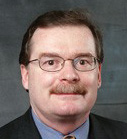The United States is the largest international investor in the world and the largest destination for foreign investment.
Foreign direct investment in the United States hovered around US$50 billion per year in the early 1990s and by 2000 had spiked to over US$300 billion. Then the tragic events of September 11, 2001 unfolded. Foreign investment in the US plummeted and attitudes toward foreign investment both in the Congress and among the public materially changed.
The effect of 9/11 was not revolutionary, rather it resulted in a large evolutionary step in a process that had been underway for over 30 years.

Partner
Sonnenschein Nath & Rosenthal LLP
The Committee on Foreign Investment in the United States (CFIUS) was born by an Executive Order of President Ford in 1975. The president acted in response to widespread concern in Congress over the rapid increase in US investment by OPEC members, flush with oil profits. Many in Congress believed OPEC investors were being driven by political considerations.
You must be a
subscribersubscribersubscribersubscriber
to read this content, please
subscribesubscribesubscribesubscribe
today.
For group subscribers, please click here to access.
Interested in group subscription? Please contact us.
你需要登录去解锁本文内容。欢迎注册账号。如果想阅读月刊所有文章,欢迎成为我们的订阅会员成为我们的订阅会员。
Wayne Rogers is a partner in the Washington DC office of Sonnenschein Nath & Rosenthal LLP. He can be reached at wrogers@sonnenschein.com.
Sonnenschein Nath & Rosenthal LLP
1301 K St, NW, Suite 600E
Washington, DC 20005
United States
Tel: +1 202 408 6478
Email: wrogers@sonnenschein.com
www.sonnenschein.com



























